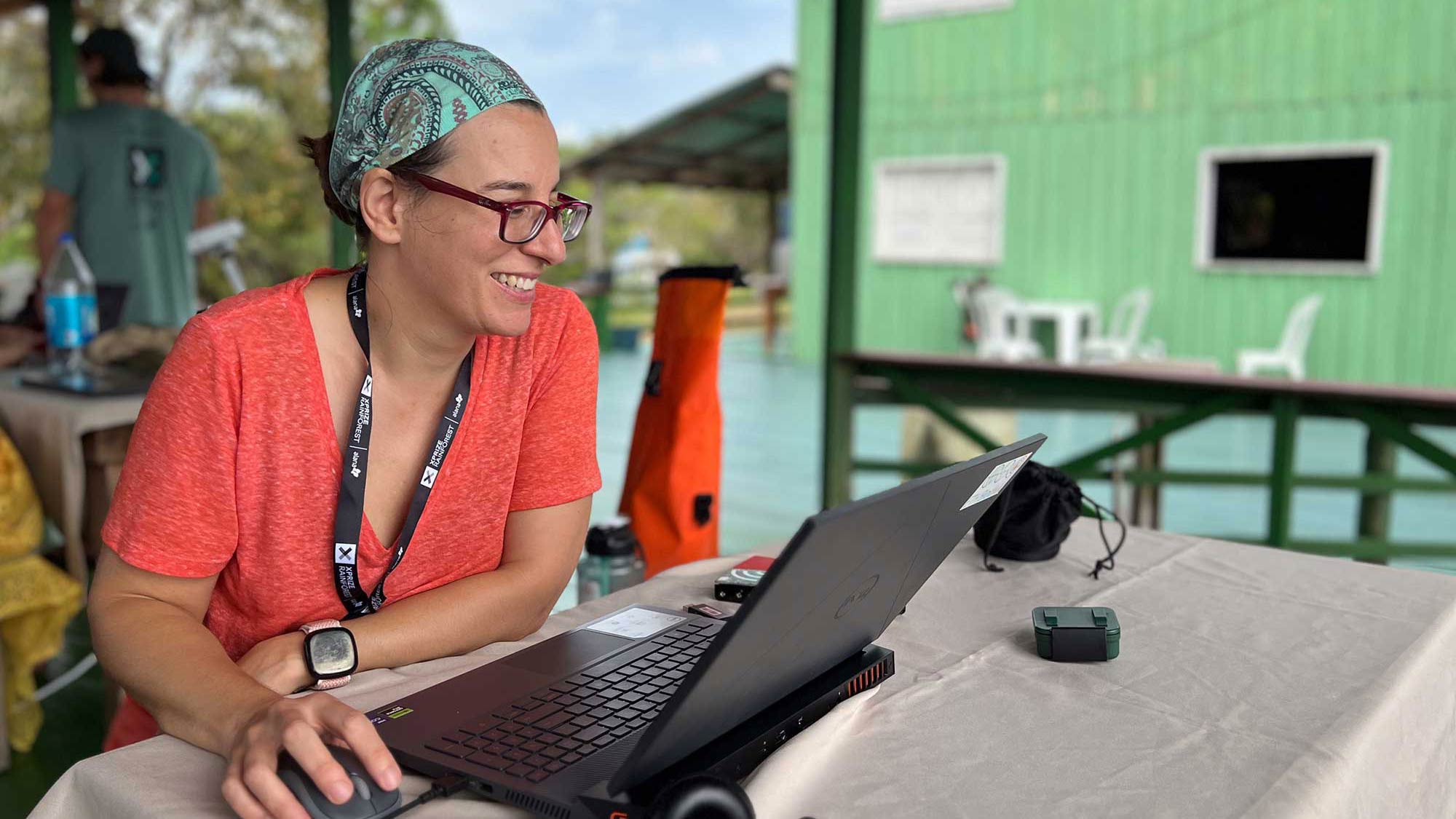Geography Professor Florencia Sangermano has become globally recognized in the expanding field of ecoacoustics, the interdisciplinary study of a habitat’s “soundscape” over time and space. She first began attaching audio recorders to trees in Central Massachusetts to capture the sounds of birds, weather, and humans in and at the edges of forests. At the invitation of fellow scientists, she has expanded her research to Brazil.

Tuning into the health of habitats from Massachusetts to the Amazon
More than 1,800 species of birds live in Brazil, home to two of the world’s most important rainforests, comprising 840 million acres in the Amazon and 330 million more along the Atlantic coast. Their songs and chatter can provide clues about the health of these diverse ecosystems, according to Sangermano, named a Kavli Fellow by the National Academy of Sciences and the Israel Academy of Science and Humanities.
To obtain a more comprehensive snapshot of a soundscape, she integrates her research in geographic information science (GIS), remote sensing, landscape ecology, and conservation. “The question we want to ask is: How are all these things connected, and how does that relate to the sounds we are listening to?”
Sangermano also is applying her ecoacoustics lens to a study with researchers at the Federal University of ABC in Brazil. They want to understand how habitat and biodiversity loss in the Atlantic rainforest could affect rodent populations, possibly transmitting infectious diseases to humans.
The rainforest has become “fragmented” into patches of untouched, deforested, and “regenerated” areas, allowing rodents to migrate closer to humans. “Our hypothesis is that a degraded ecosystem will have more diversity of rodents that carry a larger number of pathogens known to pass to humans,” she says.

